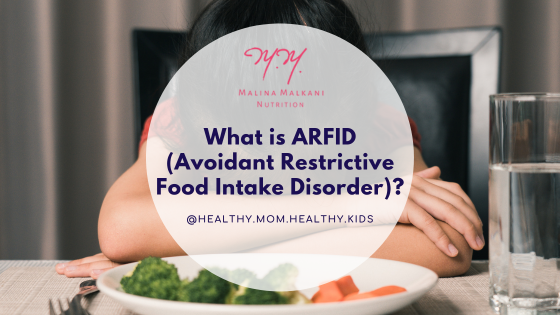Signs Your Child Has a Pediatric Feeding Disorder
As a parent, you want your child to grow, thrive, and enjoy mealtimes. But what happens when eating becomes a daily struggle? If your child consistently refuses food, sticks to a very limited diet, or seems distressed at meals, it may be more than just picky eating. These could be signs of a pediatric feeding disorder (PFD).
If you're feeling overwhelmed by your child's eating habits, you're not alone. Feeding challenges are more common than many families realize, and help is available. Understanding what a pediatric feeding disorder is can be the first step toward finding support and solutions.
In this post, my goal as a pediatric dietitian is to help you learn about pediatric feeding disorders, including how to recognize the signs, when to seek help, and how to access a free online tool for early identification.
What is Pediatric Feeding Disorder?
A pediatric feeding disorder affects infants and children who have difficulty eating or drinking in a way that’s typical for their age. These challenges go beyond typical picky eating and can impact a child’s growth, development, and emotional well-being.
So, what is PFD, exactly? According to Feeding Matters, a nonprofit dedicated to improving care for children with feeding issues, PFD is defined as “impaired oral intake that is not age-appropriate and is associated with medical, nutritional, feeding skill, and/or psychosocial dysfunction.”
In simpler terms, PFD is a broad medical diagnosis that describes feeding problems in one or more of the following areas:
Medical (e.g., reflux, allergies)
Nutritional (not getting enough nutrients to grow)
Feeding skills (trouble chewing or swallowing)
Psychosocial (anxiety, trauma, or sensory issues around eating)
It’s estimated that 1 in 37 children under age five in the U.S. is affected by a pediatric feeding disorder. For these infants and children, every bite can feel scary, painful, or even impossible, putting their nutrition, growth, and development at risk.
Common Signs of a Pediatric Feeding Disorder
Identifying a pediatric feeding disorder early can make a big difference. These symptoms may vary depending on the child’s age and underlying causes, but I’ve listed below some red flags to watch for:
Refusing to eat or drink
Choking, gagging, or vomiting during meals
Avoiding certain textures or food groups entirely
Difficulty gaining weight or growing as expected
Stressful or prolonged mealtimes
Tantrums or anxiety around food
In infants, poor latching or trouble transitioning to solid foods
How Does a Pediatric Feeding Disorder Differ from Picky Eating?
Most children go through phases of picky eating, which are a common part of development. A picky eater might prefer familiar foods, resist trying new ones, or occasionally reject entire food groups. However, these kids usually continue to meet their nutritional needs and grow well.
A pediatric feeding disorder, on the other hand, is more serious. Children with PFD often struggle to meet basic nutritional or developmental needs without professional help. The issue isn’t just about preference, it’s about function. These children may need a coordinated care plan involving healthcare professionals such as pediatricians, dietitians, and therapists.
Is ARFID the same thing as PFD?
Feeding challenges in children can be complex, and two common diagnoses you may hear about if your child struggles with eating include ARFID and PFD. While they sound similar, they involve different areas of pediatric medicine and focus on slightly different aspects of a child's feeding difficulties.
ARFID (Avoidant/Restrictive Food Intake Disorder) is a mental health diagnosis and type of eating disorder that describes children (and adults) who struggle to eat enough food, not because of body image concerns, but due to fear of eating, lack of interest in food, or strong aversions to certain textures, smells, or tastes.
PFD, on the other hand, is a broader medical diagnosis referring to children who can’t eat enough or appropriately due to one or more of the following: medical issues, nutrition concerns, lack of feeding skills, or psychosocial challenges. PFD does not include body image concerns either, and a diagnosis helps guide care by looking at the whole picture of a child’s feeding and development.
Because there’s an overlap between ARFID and PFD, it’s possible for a child to have both diagnoses. In fact, if your child has been diagnosed with ARFID, it’s often helpful to also look at things through the PFD lens to see if medical issues or skill delays might be part of the puzzle.
A thorough evaluation across all areas, including medical, nutritional, developmental, and emotional, is crucial for determining the proper support and treatment for your child.
When to Seek Help
Many parents wonder when to worry. If you’re asking yourself,
“Is my child’s eating affecting their growth?”
“Are they missing key nutrients?”
“Is our daily life revolving around stressful meals?”
If the answer to any of these is yes, or even maybe, connect with a pediatric dietitian, pediatrician, or feeding specialist. Early intervention can make a big difference in helping your child thrive.
Collaborative and Coordinated Care
Pediatric feeding disorders are complex and often require a collaborative care approach that considers medical, nutritional, feeding skill, and psychosocial factors. This means professionals from different disciplines, such as dietitians, speech therapists, occupational therapists, pediatricians, and psychologists, work together in a coordinated care model to support your child.
The interdisciplinary model ensures that each aspect of the child’s feeding challenges is addressed. For example, a child who avoids food due to texture issues might require both nutritional support and occupational therapy to enhance their sensory tolerance.
How to Get Started: Use a Free Online Tool
Not sure if your child’s behaviors warrant further evaluation? Feeding Matters offers a free tool called the Child Feeding Questionnaire, an online resource that helps parents better understand their child’s feeding behaviors.
This questionnaire screens for potential feeding concerns and can be a helpful first step toward getting the right support. It's easy to use, takes just a few minutes, and can be a valuable conversation starter with your healthcare provider.
Final Thoughts
Pediatric feeding disorders can be challenging, but with the right support and a collaborative team, your child can make meaningful progress. And at the heart of it all is you, their parent. You know your child best, and your voice matters. Trust your instincts, seek support, and advocate for your child’s needs.
If you need guidance around a specific nutrition-related concern, I am currently accepting new clients in my virtual private practice. I would love to meet with you to help get you and your child the help they need.
And if you have a child struggling with picky eating, grab my FREE guide to reducing picky eating. If you want more guidance navigating picky eating behaviors in your toddler, preschooler, and school-age kids, check out my online course, Solve Picky Eating, a self-paced set of 12 modules delivered in 5 to 15-minute videos.
Thanks for reading!





